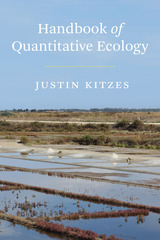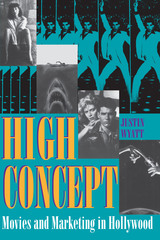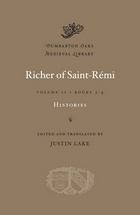6 start with H start with H

Quantitative research techniques have become increasingly important in ecology and conservation biology, but the sheer breadth of methods that must be understood—from population modeling and probabilistic thinking to modern statistics, simulation, and data science—and a lack of computational or mathematics training have hindered quantitative literacy in these fields. In this book, ecologist Justin Kitzes addresses those challenges for students and practicing scientists alike.
Requiring only basic algebra and the ability to use a spreadsheet, Handbook of Quantitative Ecology is designed to provide a practical, intuitive, and integrated introduction to widely used quantitative methods. Kitzes builds each chapter around a specific ecological problem and arrives, step by step, at a general principle through the process of solving that problem. Grouped into five broad categories—difference equations, probability, matrix models, likelihood statistics, and other numerical methods—the book introduces basic concepts, starting with exponential and logistic growth, and helps readers to understand the field’s more advanced subjects, such as bootstrapping, stochastic optimization, and cellular automata. Complete with online solutions to all numerical problems, Kitzes’s Handbook of Quantitative Ecology is an ideal coursebook for both undergraduate and graduate students of ecology, as well as a useful and necessary resource for mathematically out-of-practice scientists.


A Healthy Nature Handbook captures hard-earned ecological wisdom from this community in engaging and highly readable chapters, each including illustrated restoration sequences. Restoration leaders cover large-scale seeding approaches, native seed production, wetland and grassland bird habitat restoration, monitoring, and community building.
Contributions from local artists bring the region’s beauty to life with vibrant watercolors, oil paintings, and sketches. A Healthy Nature Handbook is packed with successful approaches to restoring nature and is a testament to both the Chicago region’s surprising natural wealth and the stewards that are committed to its lasting health.

Steven Spielberg once said, "I like ideas, especially movie ideas, that you can hold in your hand. If a person can tell me the idea in twenty-five words or less, it's going to make a pretty good movie." Spielberg's comment embodies the essence of the high concept film, which can be condensed into one simple sentence that inspires marketing campaigns, lures audiences, and separates success from failure at the box office.
This pioneering study explores the development and dominance of the high concept movie within commercial Hollywood filmmaking since the late 1970s. Justin Wyatt describes how box office success, always important in Hollywood, became paramount in the era in which major film studios passed into the hands of media conglomerates concerned more with the economics of filmmaking than aesthetics. In particular, he shows how high concept films became fully integrated with their marketing, so that a single phrase ("Just when you thought it was safe to go back in the water...") could sell the movie to studio executives and provide copy for massive advertising campaigns; a single image or a theme song could instantly remind potential audience members of the movie, and tie-in merchandise could generate millions of dollars in additional income.

The Historia of Richer of Saint-Rémi (ca. 950–ca. 1000), an invaluable source for understanding tenth-century West Francia (present-day France), provides a rare contemporary account of the waning Carolingian dynasty, accession of Hugh Capet, and failed rebellion of Charles of Lorraine. Beginning in 888, the Historia surveys a tumultuous century in which two competing dynasties struggled for supremacy, while great magnates seized upon the opportunity to carve out their own principalities. Richer’s descriptive talents are on display as he tells of synods and coronations, deception and espionage, battles and sieges, disease and death, and even the difficulties of travel.
The Historia also sheds light on a controversial figure of the Middle Ages, the legendary cleric and scholar Gerbert of Aurillac. Gerbert, the dedicatee of the Historia, rose from humble beginnings to become archbishop of Rheims, archbishop of Ravenna, and eventually pope (as Sylvester II). The Historia contains a fascinating description of his teaching at the cathedral school of Rheims, where his innovations involved instruments such as the monochord, armillary sphere, and abacus.
Translated into English here for the first time, the Historia holds particular attractions for historians and for anyone interested in the cultural and intellectual developments in the Latin West around the year 1000.

The Historia of Richer of Saint-Rémi (ca. 950–ca. 1000), an invaluable source for understanding tenth-century West Francia (present-day France), provides a rare contemporary account of the waning Carolingian dynasty, accession of Hugh Capet, and failed rebellion of Charles of Lorraine. Beginning in 888, the Historia surveys a tumultuous century in which two competing dynasties struggled for supremacy, while great magnates seized upon the opportunity to carve out their own principalities. Richer’s descriptive talents are on display as he tells of synods and coronations, deception and espionage, battles and sieges, disease and death, and even the difficulties of travel.
The Historia also sheds light on a controversial figure of the Middle Ages, the legendary cleric and scholar Gerbert of Aurillac. Gerbert, the dedicatee of the Historia, rose from humble beginnings to become archbishop of Rheims, archbishop of Ravenna, and eventually pope (as Sylvester II). The Historia contains a fascinating description of his teaching at the cathedral school of Rheims, where his innovations involved instruments such as the monochord, armillary sphere, and abacus.
Translated into English here for the first time, the Historia holds particular attractions for historians and for anyone interested in the cultural and intellectual developments in the Latin West around the year 1000.
READERS
Browse our collection.
PUBLISHERS
See BiblioVault's publisher services.
STUDENT SERVICES
Files for college accessibility offices.
UChicago Accessibility Resources
home | accessibility | search | about | contact us
BiblioVault ® 2001 - 2024
The University of Chicago Press









